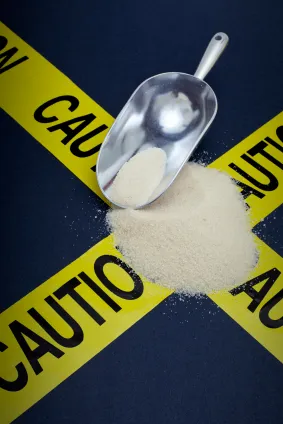
The Candida Diet
While Candida albicans—a type of yeast species—is normally found in our digestive tract and on our skin, it can easily grow out of control when fueled by a combination of dietary and lifestyle factors. Millions of people suffer from the effects of Candida overgrowth that result in or complicate a wide range of conditions and symptoms. Some of the most common include yeast infections (thrush), vaginitis, irritable bowel syndrome, migraines, weight gain, fibromyalgia, chronic fatigue, and depression.
Since the symptoms of Candida overgrowth, also known as Candidiasis, mimic many other diseases and conditions, it can be tough to tell for sure if this one-celled fungus is the culprit. But if you have one or more of these symptoms, and they haven’t responded to other treatment, Candida may well be responsible. The good news is that by addressing your dietary and lifestyle choices, you can restore and maintain a healthy balance in your gut that will have a profound effect on your wellbeing.
Outsmarting Candida with your Diet
Dietary factors that encourage the overgrowth of Candida include eating highly processed and refined foods and those containing various forms of sugar. Other culprits are, starchy vegetables, bread and pastries, alcohol, vinegar, and fruits. Foods likely to contain molds such as aged cheese, peanuts, cashews, and mushrooms are also poor choices on a Candida Diet.
Don’t despair if the foregoing reads like a checklist of your daily food intake. Following the food recommendations included below will help restore the balance of “good” bacteria in your system and starve the Candida. As your symptoms disappear by curbing the yeast population explosion in your body, you may be able to reintroduce some otherwise healthy foods in limited quantities over time.
Generally, a diet that includes plenty of free-range chicken and eggs, grass-fed beef, fish, non-starchy vegetables, nuts and seeds, and healthy oils and fats will deprive Candida of the foods it thrives on. Adding probiotic foods to your diet such as yogurt, kimchi, and kefir that contain beneficial bacteria as well as supplements such as acidophilus will hasten the process of restoring the balance of flora in your intestinal tract.
Foods to Savor on the Candida Diet
- Artichokes
- Asparagus
- Avocado
- Broccoli
- Butter
- Cabbage
- Cauliflower
- Celery
- Chicken, turkey and other poultry (free-range and organic)
- Coffee or tea without sweetening. Some people with candidiasis are aggravated by caffeine: choose decaffeinated options.
- Collard greens
- Cucumber
- Dairy that is full-fat, organic, and preferably raw (If you have difficulty digesting fat, eliminate dairy from your candida diet.)
- Eggplant
- Eggs (free-range)
- Endive
- Fish (wild Alaskan salmon, sardines, halibut, mackerel, shellfish and other fish approved by the Monterey Bay Aquarium Seafood Watch.)
- Garlic
- Grains (non-glutinous types such as buckwheat, millet, amaranth, and quinoa)
- Green beans
- Kale
- Kefir
- Kimchi
- Leeks
- Lettuce
- Meat (free-range beef, poultry, lamb, pork and wild game)
- Nuts and seeds (other than cashews and peanuts)
- Okra
- Oils, healthy choices: olive, coconut, sesame, flax, sunflower, and butter oil
- Onions
- Peppers
- Radishes
- Sauerkraut (Lacto-fermented or “raw,” found with refrigerated foods, is beneficial. Sauerkraut made by vinegar pickling needs to be avoided.)
- Seaweed
- Snow peas
- Spinach
- Stevia (for sweetening)
- Swiss chard
- Tomatoes
- Turnips
- Yogurt (unpasteurized and unflavored)
- Zucchini
Avoid Problematic Foods on the Candida Diet
- Sugar in all its forms including honey, sucrose, fructose molasses, agave nectar, as well as all artificial sweeteners
- Fruit (due to the sugar content, avoid all fresh, dried or canned fruit)
- Grains (all glutinous types including wheat, oats, rye, barley, spelt, pasta, corn), whether cooked as a grain or made into bread, crackers or pasta
- Starchy vegetables such as potatoes, carrots
- Processed meats (smoked, preserved and vacuum packed meats such as bacon and Spam)
- Fish (shellfish, farm-raised fresh and saltwater fish)
- Aged cheeses
- Mushrooms (all fungi including truffles)
- Sweetened beverages (coffee, tea, soda, energy/sports drinks, fruit juices)
- Condiments (ketchup, tomato sauce, salad dressing, pickles and others that contain sugars)
- Vinegar and products containing it such as salad dressing (Apple cider vinegar is okay)
- Oils made with cottonseed, peanuts, corn, soy as well as shortening and margarine
Staying Candida Free
If you have had a tendency toward Candida, you probably know the warning signs suggesting things are getting out of balance. For some it might be increased abdominal gas, or vaginal or rectal itching. For others it might be an increased craving for sweets. At the first sign of returning symptoms, eliminate all sources of concentrated sweets and starch, and return to the full Candida Diet Plan if symptoms don’t subside within 3 days. For some people, staying on the Candida Diet Plan or DrDeborahMD.com’s Weight Loss Eating Plan for 6 months or more will make the Candida solution permanent.
Persistent candida problems suggest that the yeast have developed a protective biofilm or that your immune system is compromised in its efforts to control excessive candida. Considerations for stubborn yeast infections include supplementing with S.boulardii, a competing and friendly yeast, as well as other probiotics, and digestive enzymes which can help digest the biofilm. Pharmaceutical treatment prescribed by a health care practitioner may be required for particularly stubborn conditions.

